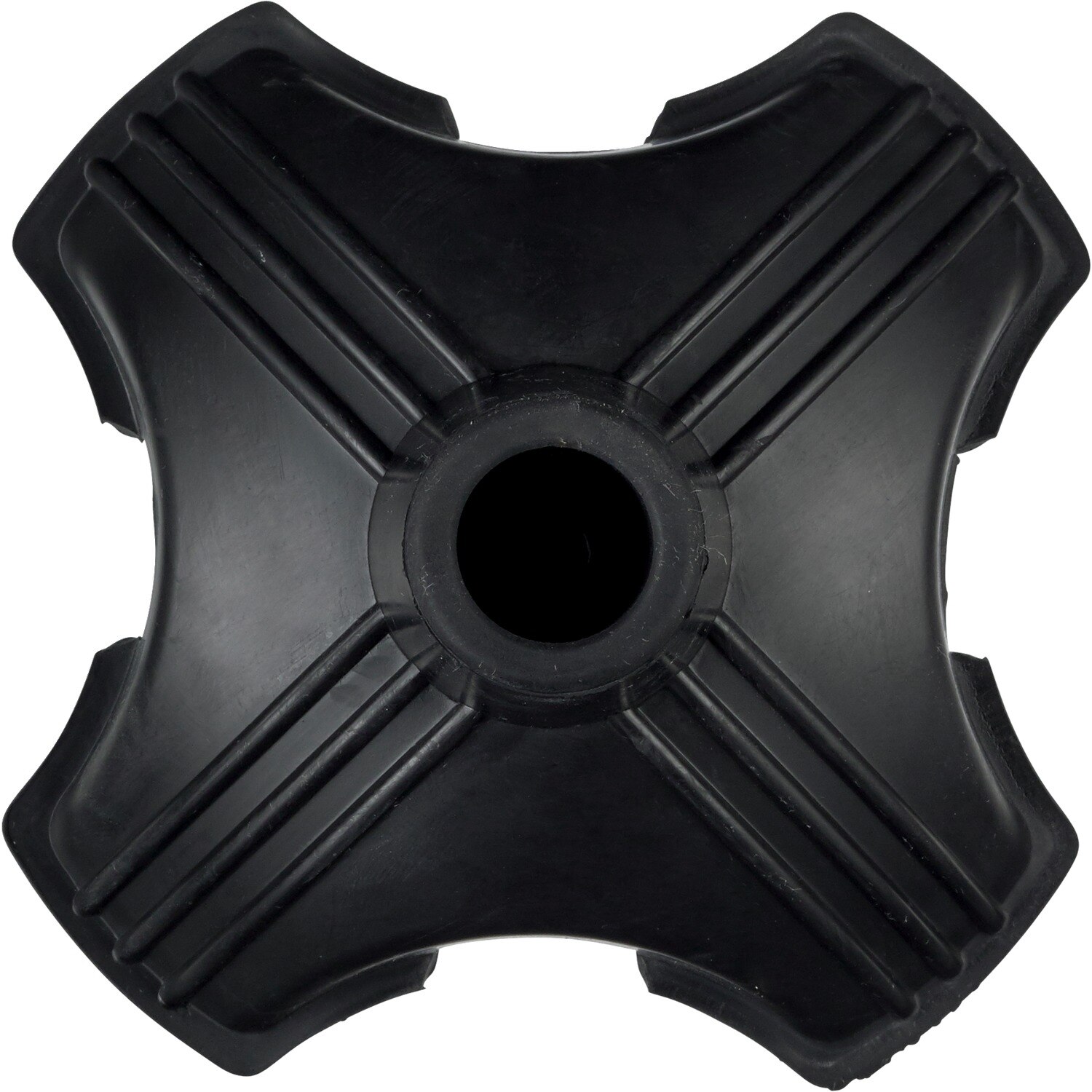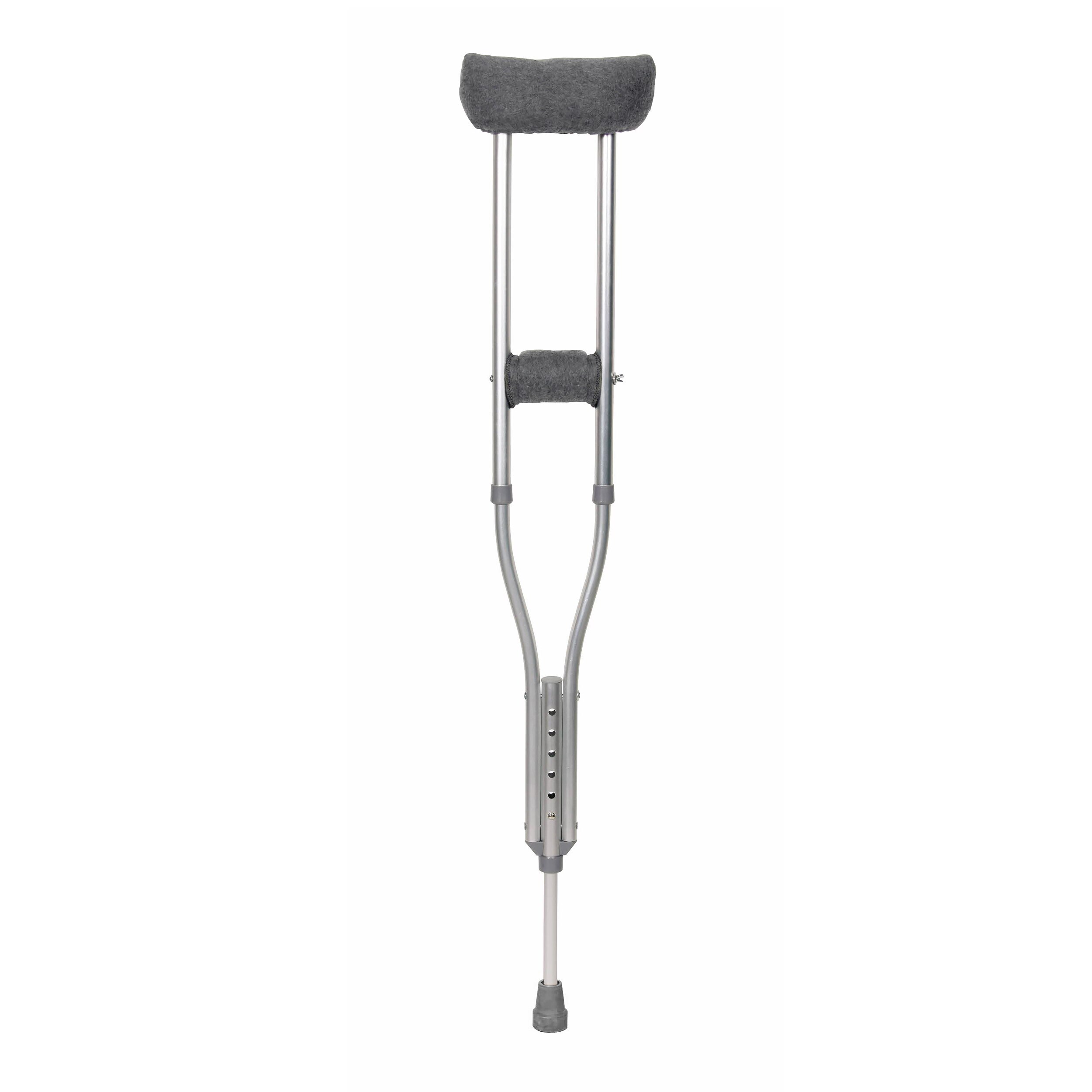Canes & Crutches

How To Use Crutches
When you break a bone in your leg or foot, have a strain or sprain, or have surgery in the lower extremity, a doctor might recommend the use of crutches. It is important to know how to use crutches the correct way.
Proper positioning begins with standing up straight. The top of the crutches should be 1-2 inches below the armpit.
The handgrips of the crutches should be even with the top of your hip line.
Elbows should be slightly bent when holding onto the grips.
To make sure you do not damage nerves and blood vessels in the armpit, the body's weight should rest on the hands and not on the underarms.
How To Walk With Crutches
Here are steps one can use when learning how to use crutches for the first time.
Lean forward slightly and put your crutches about one foot in front of you
Begin your step as if you were going to use the injured foot or leg then shift your weight to the crutches
Bring your body forward slowly between the crutches
Finish the step normally with your good leg
When your good leg is on the ground, move your crutches ahead in preparation for your next step
Always look forward, not at your feet
Mobility Aids
Limited mobility doesn't have to mean that you or your loved one must be confined to your home. With the right mobility aids, it may be possible for seniors and those with injuries or chronic conditions to walk safely and independently. If a cane or crutches is the best option for your needs, you can find the perfect mobility aid at CVS. This product selection contains a wide variety of canes and crutches that can be purchased online for convenient home shipping.
Types Of Canes
A cane is a mobility aid that is shaped like a long rod with a handle at the top. Canes may have one tip at the bottom or a four-prong base. Canes are ideal for people who are able to put weight on both legs but require extra support or assistance with balance and stability due to weakness or pain in one leg.
Crutches
Crutches are a mobility aid that consists of two arms that meet at a pole and finish with a single tip. At the top, crutches have padding that fits under the arm. Two crutches are used at once, allowing a person to walk without putting weight on one leg or foot. Upper body strength is required to use crutches properly.
Bariatric Walking Aids
All canes and crutches have a maximum weight rating that indicates how much weight the mobility aids can safely support. Standard canes and crutches may not be suitable for people who are very tall, extremely muscular or overweight. For these individuals, bariatric canes and crutches are available. These mobility aids are engineered to be extra strong and have higher maximum weight ratings than conventional canes and crutches.
Accessories For Crutches
Accessories can make it easier or more comfortable to use crutches or a cane. For example, you can purchase padding to place on crutches to cut down on rubbing and chafing as you walk. Replacement tips and hardware are also available to help keep canes and crutches in good repair.
Walking Aid
Before using crutches or a cane, talk to your doctor to find out what type of mobility aid is best for you or your loved one. He or she can also give you or your loved one tips on how to use a cane or crutches most effectively. Make sure to read the product descriptions carefully to ensure that you select a cane or crutches that are ideal for your or your loved one's height and weight.
Related Brands:
Oraquick , Sigvaris , Seal Tight , Carex , Biomedical Life Systems

















